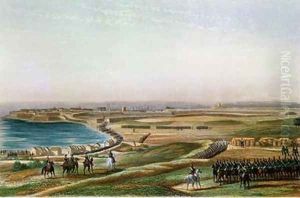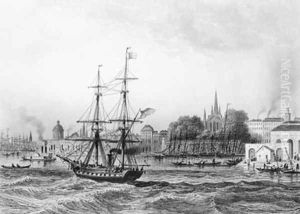Charles de Lalaisse Paintings
Charles Philogène Toustain, known as Charles de LaLaLaisse, was a French painter and lithographer born on November 17, 1816, in Paris, France, and died on February 2, 1886, in his hometown. He was primarily recognized for his work in lithography, an art form that involves printing images using a stone or metal plate.
LaLaLaisse's artistic career was shaped by the vibrant cultural environment of 19th-century France, a period marked by numerous artistic movements and the development of printmaking techniques. His work encapsulated the romantic spirit of the time, which often emphasized the picturesque and the historical aspects of subjects.
LaLaLaisse became noted for his historical and genre scenes as well as for his costume designs. He collaborated with various publications, contributing illustrations that captured the essence of French history and everyday life with a particular focus on the accuracy of the costumes depicted. This attention to historical detail made his work valuable not only artistically but also as a historical document of the period's attire.
Despite the quality and historical significance of his work, Charles de LaLaLaisse did not achieve the same level of fame as some of his contemporaries. As a result, detailed information about his life and career is not as abundant as it is for some other artists of the era. However, his contributions to the field of lithography and historical illustration remain recognized by those with an interest in 19th-century French art and costume history.
LaLaLaisse's legacy is preserved through his prints and illustrations, which continue to be of interest to collectors, historians, and those with a passion for the French Romantic period. His death in 1886 marked the end of a career that, while not widely celebrated, played a role in capturing and conveying the spirit of an era through the medium of print.

